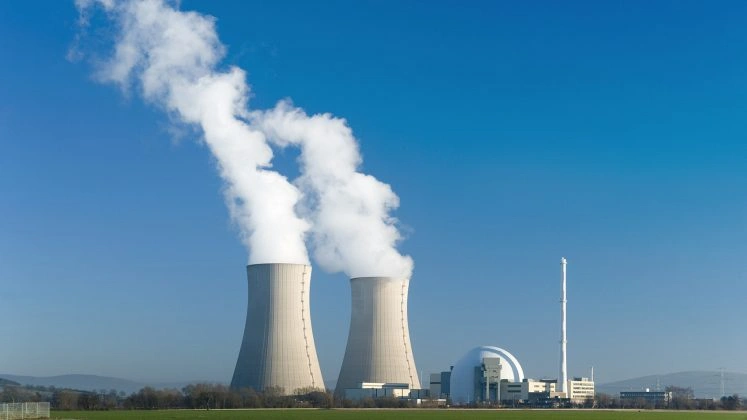In what has been deemed the worst natural disaster in the country’s recent history, floods in Pakistan this year have incurred losses of $40 billion per World Bank estimates. While people affected in the provinces of Punjab and Khyber Pakhtunkhwa are reportedly beginning to return to their hometowns to assess livelihood conditions and water is observed to be receding in affected areas of Sindh and Balochistan, the nation’s predicament is still far from over.
It is only plausible given this scenario that the upcoming COP27 will see Pakistan address climate financing and the susceptibility of the developing world to the effects of climate change; for the unprecedented scale of devastation, this year does not negate the fact that the country has consistently ranked among the 10 most vulnerable to climate change.
Pakistan: The Climate Frontier
Despite Pakistan’s nominal contribution to global carbon dioxide emissions, and its Nationally Determined Contributions (NDC) aiming for a climate-resilient, decarbonized economy, the cataclysmic proportions of the calamity, in myriad ways, have exposed the fault lines not only of the country’s resilience and adaptability to climate-induced emergencies but also the broader spectrum of disparities in the global experience of climate change.
On behalf of the Group of 77 and China, Permanent Representative of Pakistan to the United Nations Ambassador Munir Akram yesterday emphasized the urgency of taking necessary steps to bolster awareness and multilateralism, humanitarian needs, and strategic coordination of humanitarian relief, in wake of natural disasters and other emerging crises brought on by climate change.
Moreover, according to the recent Human Development Report, climate change is projected to raise average temperatures as well as temperature variability, with temperature fluctuations expected to rise by 100% in lower latitudes. Besides, about 40% of the world\’s population depends on water supplies that are impacted by considerable climatic variability; a crisis predicted to imperil an additional 1 billion people by 2080.
The most staggering of these prognoses, however, is the multiplicity of existing inequalities in contributions to and consequences of carbon dioxide emissions.
The Great Divide
To put into perspective, nearly half of the global annual emissions are induced by the top 10% of the global income distribution while the lower half accounts for only 12% of these emissions.
In 2019 alone, the bottom 50% was responsible for 1.6 tons of carbon dioxide emissions per capita, while the top 10% accounted for 31 tons per capita. Albeit in contemporary discourse, the divide had been popularized as early as 1980 in a report led by the former German chancellor, Willy Brandt. Recommending a set of policies to address problems of global inequality and poverty, it sought to overcome the political frictions that had materialized between the wealthy, industrialized Global North and the less economically developed or underdeveloped Global South. Over time, newer scholarly assertions have been made to ascertain whether the divide has persisted or rather ceased to be relevant.
Barring modern discrepancies in other indicators for analysis of inequalities, global emissions have been rising almost continuously since the Industrial Revolution, with one billion tons of carbon dioxide equivalents emitted overall by 1850, reaching approximately 50 billion today. Almost half of all emissions since the industrial revolution have been produced since 1990, the year of the first report from the Intergovernmental Panel on Climate Change (IPCC).
It is important to take into consideration historical trends of emissions that have greatly altered the course the persisting threat has taken today. Notably, of the total 2,450 billion tons of carbon released in 1850, North America accounted for 27%, Europe 22%, China 11%, South and South-East Asia 9%, Russia and Central Asia 9%, East Asia 6%, Latin America 6%, MENA 6%, and Sub-Saharan Africa 4%.
Those contributing the least to climate change find themselves at the disadvantageous end. In countries as vulnerable to climate change as Pakistan, planetary burdens may also exacerbate prevailing inequalities or even pave the way for a multitude of other challenges, such as poverty. Curbing emissions at the top tiers of the income distribution would doubtless have a tremendous effect, but unless those responsible for these burdens are not proportionally affected by them and are confident of the availability of the resources to safeguard themselves from the adverse effects, incentives to ease pressures will not be adequately realized.
The Imminent Dilemma
During the first meeting of the Pakistan Climate Change Council (PCCC), held at the PM house yesterday, Federal Minister for Climate Change, Senator Sherry Rehman, discussed Pakistan’s stance on pivotal issues in the upcoming Conference of the Parties (COP) 27. As the central decision-making body of the United Nations Framework Convention on Climate Change (UNFCCC), it reviews the progress in the implementation of assigned roles to developed countries, developed countries with special financial obligations, and developing countries in mitigating the effects of climate change.
The agenda this year for Pakistan, as yet reeling from the catastrophe that has come its way, will be advocating for an increase in the adaptation fund’s capitalization as well as introducing both flexibility and momentum in nations that need to develop their resilience. Presently, developing nations are confronted with substantial capacity gaps that must be bridged, and prolonged periods of pipelining funds lose their efficacy as resilience demands evolve quicker than the rate at which resources are disseminated.
For the Global South to survive the impending wrath of climate change, the imbalances between the Global North and the South must be amended.
Losses and damages should explicitly feature in the climate finance program. It is only justified that wealthy nations be obligated to not merely fulfill their commitments but furthermore, to compensate for their investments and carbon-intensive lifestyles that contribute to rising emissions which unfortunately have unevenly affected some nations for the worst.






